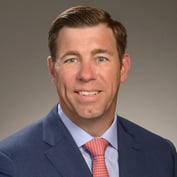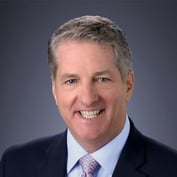Experts assess the consequences of the industry’s M&A dance.
As the financial crisis peaked in 2008, the wirehouse firms found their results and share prices plummeting. A toxic cocktail of bad bets on real-estate assets and collateralized instruments was dragging them down, way down. To prop up their capital foundations and ensure their operational future, most of them participated in what analysts call “shotgun weddings.”
To assess the pros and cons of those M&As—and the rumored possibility of a future merger involving UBS-Americas and Wells Fargo — Research spoke with a variety of experts and industry insiders. Their opinions vary widely on which organization has benefitted most (and least) from the shotgun weddings—and on the outlook as integration work continues and the pros and cons shake out.
Peer counseling groups offer distinct advantages.
Over dinner at a steakhouse in Portland, Ore., recently, nine advisors with Commonwealth Financial Network traded stories about clients, practice management challenges and their business models. By dessert, they had decided to form a study group.
“We all operate within a 30-mile radius but there aren’t a lot of opportunities to meet except at conferences or wholesaler meetings. This is just a great way to share ideas,” notes Pat Sturr, a partner in a retirement income planning practice in Lake Oswego.
Peer counseling—in the form of study groups, conference calls, even online chat rooms—has grown deep roots in the advisory community. While there is no definitive research to suggest it helps push advisors to new heights, the anecdotal evidence that it does is convincing.
For some professionals, leaving finance is a step toward changing the world.
The “Me Generation” could be aging into the “Benevolent Generation” — at least evidenced by the humanitarian second acts of a number of Wall Street war baby and baby boomer retirees. For their next chapters, these men and women who built lucrative careers in financial services are following another passion, working not to make money but to make a difference.
At age 57, Credit Suisse ultra-high-net-worth advisor Virginia DeCristoforo adopted three at–risk children. IMCA co-founder and hedge fund manager Jim Owen channeled his passion for the values of the Old West into his Center for Cowboy Ethics and Leadership. Jamie Waller, a director of separately managed accounts, became a Christian missionary in Guatemala. And Bracek & Young Advisors co-founder Hal Young brings computers to destitute orphans in Guatemala so they’ll have skills to land their first job.
Pershing CEO Brian Shea has an eye for opportunities.
For Brian Shea, a bit of good luck 28 years ago cracked open the door of opportunity. Brainpower and hard work propelled him to the top. Promoted last October to CEO of Pershing, the BNY Mellon-owned market leader in clearing—with more than $900 billion in assets in custody and 1,500 clients globally—Shea, 50, kicked off his long career at Pershing right out of college.
“Brian understands so many aspects of our business beyond most mortals because he’s had experience in so many different [areas] of it. That gives him a distinctive perspective,” says Richard Brueckner, Pershing chairman.
In tandem with Brueckner, Shea had been active in the company’s leadership as president-COO for nine years, when Brueckner, formerly chairman-CEO, promoted him last fall. Now he’s at the helm of all Pershing affiliates worldwide, which embraces 21 offices and 6,000 associates.








 April 28, 2011 at 01:49 PM
April 28, 2011 at 01:49 PM



 The Power of Peers
The Power of Peers Life After Wall Street
Life After Wall Street Realistic Optimist
Realistic Optimist






 Managing the Pipeline
Managing the Pipeline A Constrained World
A Constrained World The Research Magazine Guide to Natural Gas Investing—2011
The Research Magazine Guide to Natural Gas Investing—2011